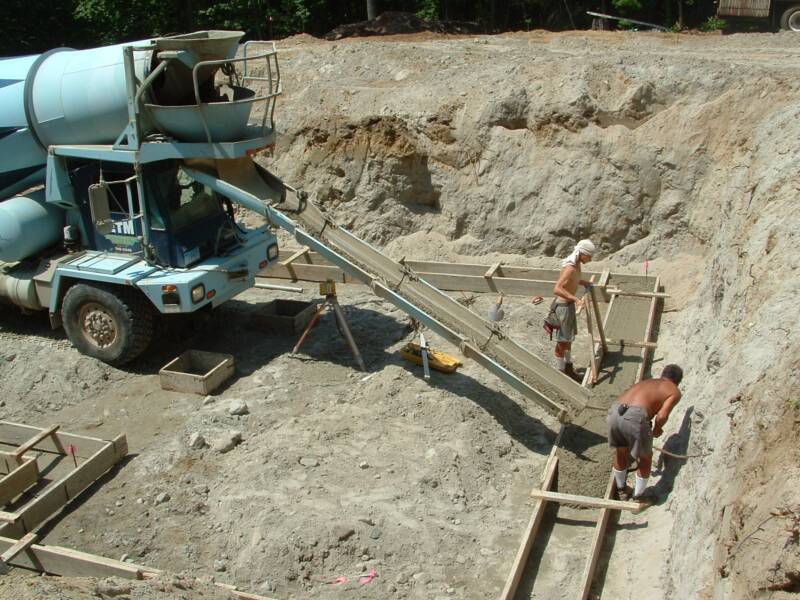Footings
Set-up

Icf walls use conventional footings. Follow plans and local building codes for thickness, width and reinforcement. Insert dowels in the footing, spacing per plans or local code.
Anytime there is a question on the bearing capacity of the soil it should be checked by a soils engineer.
When we excavate for the footings, the teeth on the bucket stir up the soil and mix air into it, decreasing its density. Soil that's loose has much less bearing capacity than the original soil. That's why it is so important to compact the trench bottom (use a vibrating plate compactor for sand or gravel soils, and a jumping jack compactor for silt or clay). If you don't compact that soil, you could get 1/2 inch of settlement in just the first 6 inches of soil.
Any soil that is disturbed must be compacted. Then set forms level and straight and check for square. Install any rebar that has been requested into the footing.
Pouring

Footings can be truck poured or pumped depending on the access you have to the site.

Vibrate the footings before leveling and placing the dowels.
Install the dowels.
